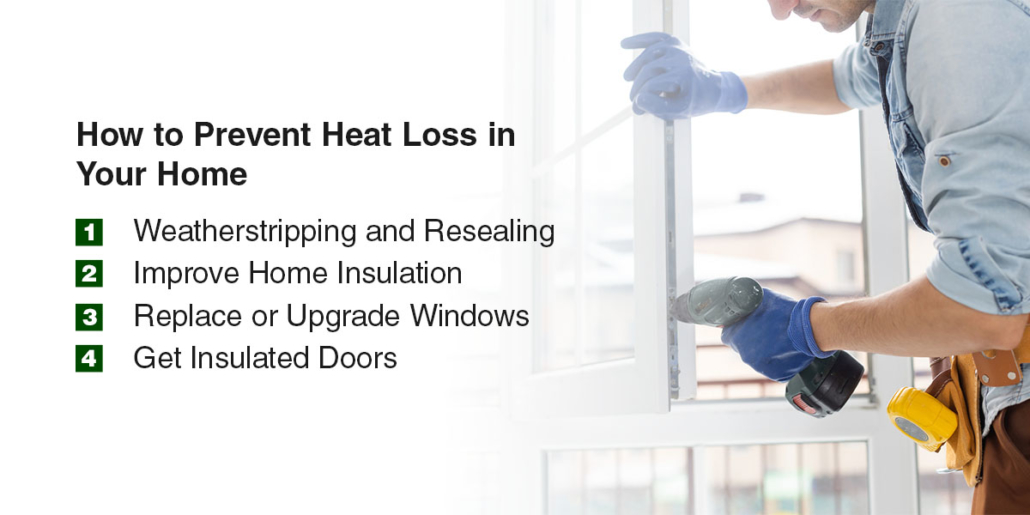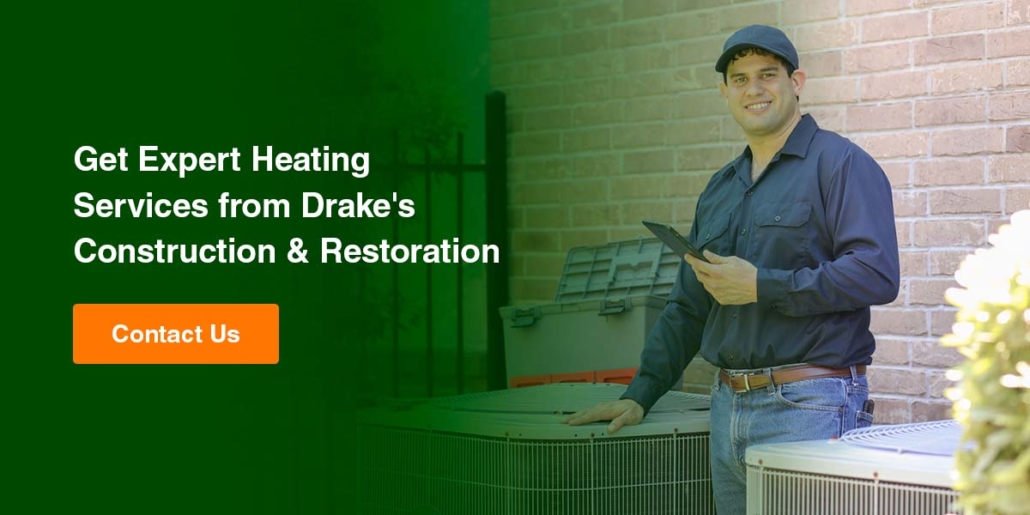Reducing Heat Loss In Your Home
Heat loss in the winter can rapidly become an expensive and uncomfortable issue. While you might wonder if your heating system is to blame, another explanation could be hiding right under your nose.
If your home needs better insulation, all that heat could be leaking out of your home, causing the temperature to drop while your energy bills rise. Check out these tips to discover the best ways to reduce heat loss in your home.
What Is Heat Loss?
Heat loss occurs in homes when the cold outside air replaces the warm air inside. Air at two different temperatures will always try to reach a balance between them — warm indoor air naturally moves toward the cooler outdoor temperatures and vice versa.
This attempt at balance can make it challenging to maintain a comfortable temperature inside and prevent expensive heat loss during the winter months. Air can easily escape through roofs, windows, doors, walls and floors, taking your heat with it.
Why Should You Reduce Heat Loss?
Reducing your home’s heat loss will save money and keep you more comfortable during the coldest winter. While it might not seem like a big deal to have a little bit of heat loss here and there, those little bits can quickly add up to big energy bills.
The more heat escapes from your home, the harder your heating system has to work to heat the house and the more you’ll spend to keep it running. The extra strain on your system can also shorten its life span, driving up your repair and replacement costs and leaving you without efficient heating next winter.
Where Does Your House Lose the Most Heat?
Cracks and gaps are among the most significant sources of home heat loss — unsealed spaces make it easy for air to escape your home. While they might be too small to see, your home’s warm air will start slipping through those cracks in no time.
Your windows are another major source of heat loss. In fact, they’re responsible for as much as 30% of the energy you use to heat your home.
How to Detect Heat Loss in a House
Heat loss detection is the first step in heat loss prevention. You can manually feel for cracks and drafts around your windows, doorframes, chimneys and wiring holes. Hold a lighter or a lit candle near these areas — if the flame starts flickering or goes out, you’ve found a draft.
While you can manually identify some heat loss areas, a thermal camera is the only fully accurate way to check for home heat loss. They’re fast and accurate and will show you exactly where your problem areas are. A thermal heat loss survey can identify underperforming heating, drafts and insulation gaps in your home.
If you can get a thermal imaging camera, you can conduct a survey yourself. However, while a camera might help you spot more issues, it’s typically best to hire a professional. They’ll have all the necessary equipment and will know what to look for to identify what your next steps should be.
How to Prevent Heat Loss in Your Home
Whether you’ve had a heat loss survey or simply noticed a temperature drop, improving your home’s insulation is the best way to stop your house from losing heat. Let’s break down heat loss prevention so you can keep the heat inside your home.
You can use these tips to make your house more insulated and improve its resistance to heat loss.
1. Weatherstripping and Resealing
Weatherstripping is one of the least-expensive ways to reduce and prevent heat loss. The tiny cracks and gaps in degraded seals can quickly add up, especially if they’re all over the home. You can close up these spots to keep the heat inside — caulk or weatherstrip your chimneys, doors, windows, appliance ducts and sink pipes to prevent heat loss.
2. Improve Home Insulation
You can reduce your home’s heat loss simply by adding better insulation to areas that need it. If you have damage from animals, storms or regular wear and tear, hiring a professional to repair or replace your roof will restore that vital heat barrier. Traditional fiberglass insulation in your attic can also wear out over the years and won’t perform as well as it once did. You can lay new rolls in the attic to reduce heat loss through the roof.
Adding insulation is also an excellent way to prevent heat loss from your floors and walls. If you’re looking for insulation that will prevent even more heat loss, consider having a professional install blown-in insulation. Adding insulation to hollow walls and between the floor and substrate will keep air from escaping into gaps and make it harder for heat to leave your home.
You can also add thick rugs or install a high-quality carpet for another layer of prevention. In addition to keeping the heat inside, it will also make your floors soft and comfortable.
3. Replace or Upgrade Windows
Older windows are often single-paned, making it much easier for heat to travel through them. If your windows are old or just aren’t cutting it anymore, you might need to replace them with a more insulated, energy-efficient model.
When it’s time to upgrade your windows, you’ll want to choose a double- or triple-paned option. The space between the panes makes it much more difficult for heat to escape through the glass. You can also look into getting windows with special coatings that reduce glare, minimize fogging and improve efficiency.
If you’re looking for a reasonably inexpensive window upgrade you can do on your own, adding curtains is an easy way to prevent heat loss from windows. You can hang thick thermal-lined curtains in front of windows and even doors to help reduce heat loss. They can add a stylish pop of color to your home, and the fabric will add another layer between your warm air and the cold outdoors.
4. Get Insulated Doors
While windows are a major culprit for heat loss, your doors are another contributing factor. Well-insulated doors will ensure your home is sealed tight against heat loss, no matter the weather.
Insulated steel or fiberglass doors can go a long way toward heat loss prevention. You might also consider upgrading to a better-insulated garage door. Your garage can be a significant source of heat loss, especially if it only has minimal insulation. Ensuring your home’s entry points are sealed up will help keep the heat in and the cold out.
Get Expert Heating Services from Drake’s Construction & Restoration
In addition to insulating your home against the winter chill, it’s also essential to ensure your heating system works efficiently. You can count on Drake’s Construction & Restoration to provide fast, high-quality heating and cooling services to your home in Parkersburg, West Virginia.
Our expert team will work with you to prepare your home for whatever the weather brings. If you’re dealing with damage, our reliable emergency repair services will quickly help you out.
Contact us online today for help with your next home project or emergency repair.





